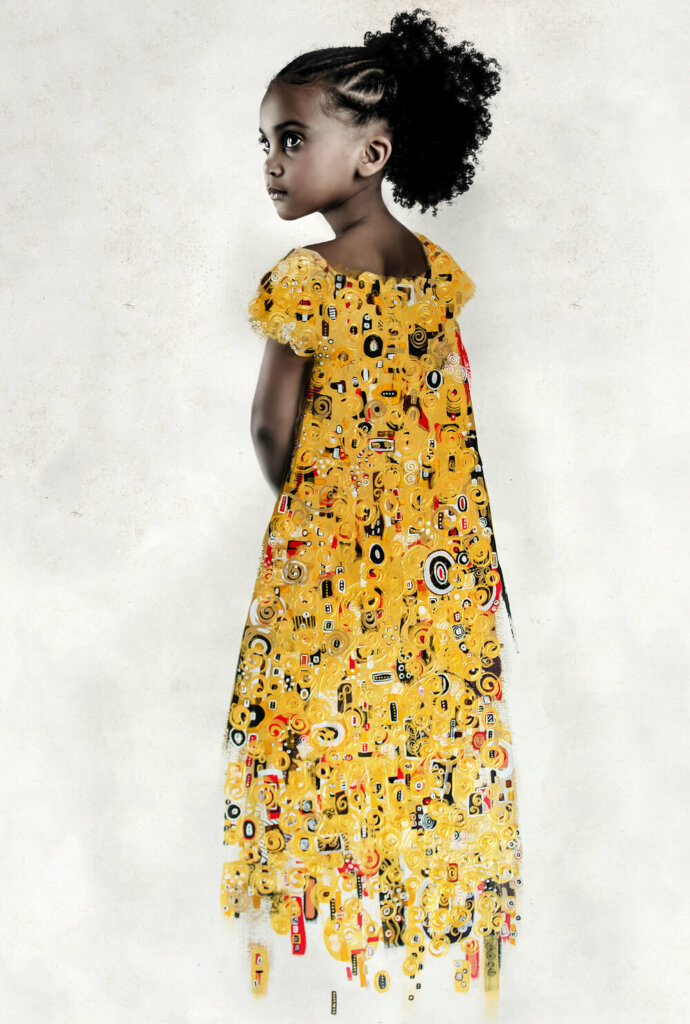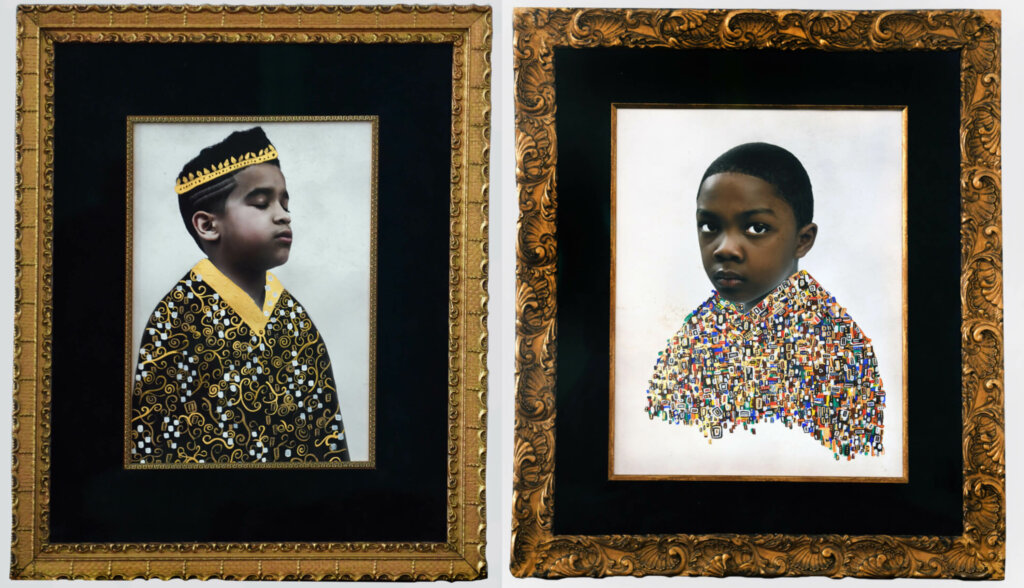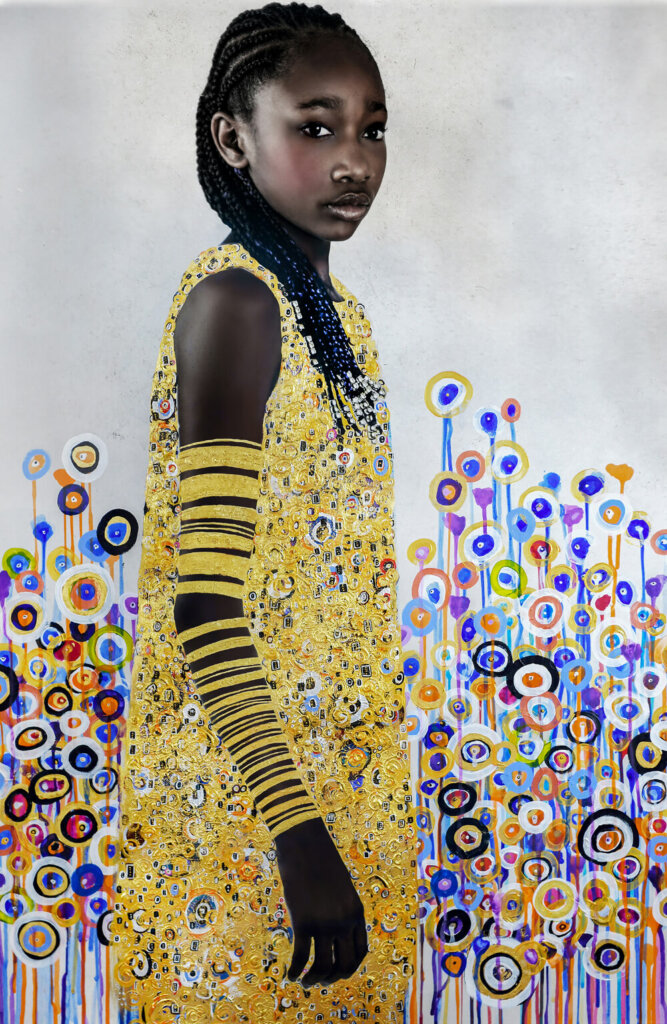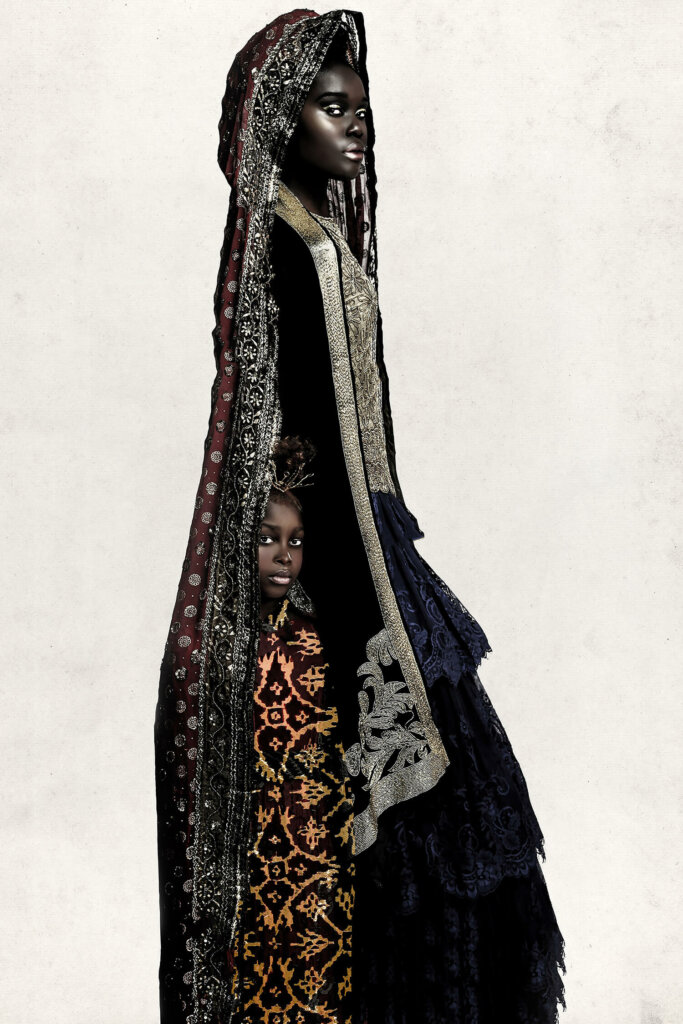News
Poly Context: Artist Tawny Chatmon on Celebrating the Beauty of Black Childhood

The Poly community was treated to a unique glimpse into the creative process and inspiration behind the work of acclaimed artist Tawny Chatmon. In a special interdisciplinary Poly Context event on December 16, the artist shared her vision, motivations, and intention to elevate and celebrate Black childhood. Visual Arts Department Chair Laura Coppola ’95, P’35 and History Department Chair Maggie Moslander collaborated on the event.
Assistant Head of School, Academics Michal Hershkovitz P’16, ’18 welcomed everyone to Poly Context saying that the speaker series is a “hallmark of our extra-academic life” that we invite artists and scholars to interact with students. Students in Grade 11 History, AP Art History, and Art and Social Change had studied Chatmon’s work in advance of the event.
Tawny Chatmon’s artistic evolution began with performing arts, acting in school plays, attaining roles as an extra in films, and being cast in an off-Broadway play. The gift of a camera at 19 led her to change course and find her career path and passion in photography.
The Why and The How: Meaning, Intention, Influences, and Process
Chatmon recalled taking her children through an art museum and how long it took for them to find a portrait of someone who looked like them. She shared the poignant story of how she documented her father’s battle with cancer 10 years ago and how it became a turning point in her life. Their tight family bond became more pivotal to her artistic vision. When he passed, “something died and something awakened,” she said. The artist was determined to be a “vessel to send a clear message for the betterment of the world.” She shifted away from commercial photography and used her art to channel her emotions. “I began to think more about the world I wanted my children to grow up in versus the world as it is today.”
These events, along with other personal memories and experiences, shaped her work and message profoundly. The theme that permeates her artwork is “the beauty of Black childhood” with which she marries the influence of historical Western Art styles that “often under-celebrated” Black men, women, and children.
“I’m so excited for Poly to learn from Chatmon,” said Head of Arts Michael Robinson, “Her work and her commitment to make sure that Black children are depicted in ways that she recognized as missing from her own experiences as a Black girl, growing up without seeing herself represented in museums or historical imagery, is powerful and important.”
“Photography is my first layer of communication,” Chatmon said. She described her work as digital collage, manipulation using Photoshop, acrylic paint, and gold leaf. She begins her process of creating her vision with a portrait sitting, noting that she typically uses someone she knows, including her children or nephew, or a familiar model, as the subject. In select works that reference Byzantine art, she digitally manipulates the photo to create an exaggerated long form and then overlaps with gold leaf or acrylic paint. She is currently experimenting with using semi-precious stones such as emeralds and onyx to embellish the work in a manner that further elevates the subject to a regal stature.

The frames she uses also play a role in the presentation of the portrait. Much akin to the large, detailed frames that adorn classic portraits of nobility in museums, Chatmon seeks out gold, vintage, antique, or baroque frames for her work. She explained that searching for the right frame is critical so the finished piece “looks like it always belonged in the frame.”

The Beauty of Black Childhood and Historical Inspiration
Chatmon explained that she was inspired by Austrian painter Marianne Stokes’ work in creating Covered in her Awakening series. She described the major themes in her work as: the beauty of Black childhood; celebrating maternal, parental, and familial bonds; celebrating natural hair and hairstyles celebrated in Black culture, but often not accepted by western beauty standards; hair as it relates to culture and identity; and addressing social problems through work.
Chatmon shared her intention as “reinterpreting the historical meaning of Black existence” in art. She intentionally conveys feelings of Black pride and brings to the forefront in her art “the Black body as the primary figure.”
“Chatmon’s work is so essential as we seek to further understand and critique our history and our present, especially through the lens of representation and identity,” said Visual Arts Department Chair Laura Coppola ’95.
Chatmon said her work has also been influenced by Byzantine Art and Austrian symbolist painter Gustav Klimt’s Golden Phase, which can be seen in her The Redemption series in the gold leaf painting of dresses.

In conclusion, Chatmon said, “It is important to me to push the needle even in a small way.” She shared a brief video that “celebrates the beauty of Black childhood.”
Moslander thanked Chatmon and introduced questions the students had submitted after studying Chatmon’s work.
Q&A with the Artist
Leah Radney ’22 asked Chatmon if she thinks she “would have been well-received generations ago or is this the right time?” Chatmon said that now, when race is an issue, people are more open than they would have been years ago.
In response to other questions, Chatmon said how important it was to her, as the mother of three Black children, to be protective of Black children. Mariana Rivera-Donsky ’21 asked the artist what emotions she wants to evoke. “I want the viewer to feel something,” she said. “I want them to look beyond the beauty and look further to the issues.” Other questions dealt with the clothing designs, colorism in art, and what recommendations Chatmon would make to young photographers. She said students do not need to get “the perfect camera,” but rather it is about finding something important to focus on.
“I think her work is beautiful, said Carly Pyles ’22 afterward. “I was amazed by the thought that went into every decision Chatmon made – the frames, the outfits, the materials, the digital enhancement. She talked about her inspiration to create, including trips to museums with her children where they didn’t see anyone on the walls who looked like them. The notion that Chatmon’s art offered a ‘counter narrative’ to that experience resonated with me because it showcases Black women in a way art of the past never did. Her vision to create a better world for her children through art is just as beautiful as the finished products.”
“As teachers of history and art history,” noted Moslander, “we were drawn to Chatmon’s work because it forces us to confront the question of what history is and how the way we represent ourselves and our history shapes the way we understand the world in which we live.”

Coppola added, “Not only has so much of our history been told through a white, Western, Eurocentric perspective, but our visual culture, too, is part and parcel of that history. To reshape our thinking, to create a more inclusive, more culturally textured and interesting way of being in and seeing the world, we have to be able to thoughtfully critique art and history. Once we do that, we can make our engagement with the world around us more reflective of and sensitive to its real diversity.”
Robinson, a well-recognized fabric artist himself, said, “I’m in awe of the beauty and presence of, in her own words, ‘the beauty of Black childhood,’ and how Chatmon utilizes the tools of art history and photography-based practice to realize these stunning, empowered works. I appreciate her mixed media explorations—the gold leaf work, the floral and wildlife hand-drawn digital components. I love how ‘beauty’ is a statement of advocacy and activism and history all achieved with such a strong personal vision and commitment.”
View more of Tawny Chatmon’s work on Instagram.



